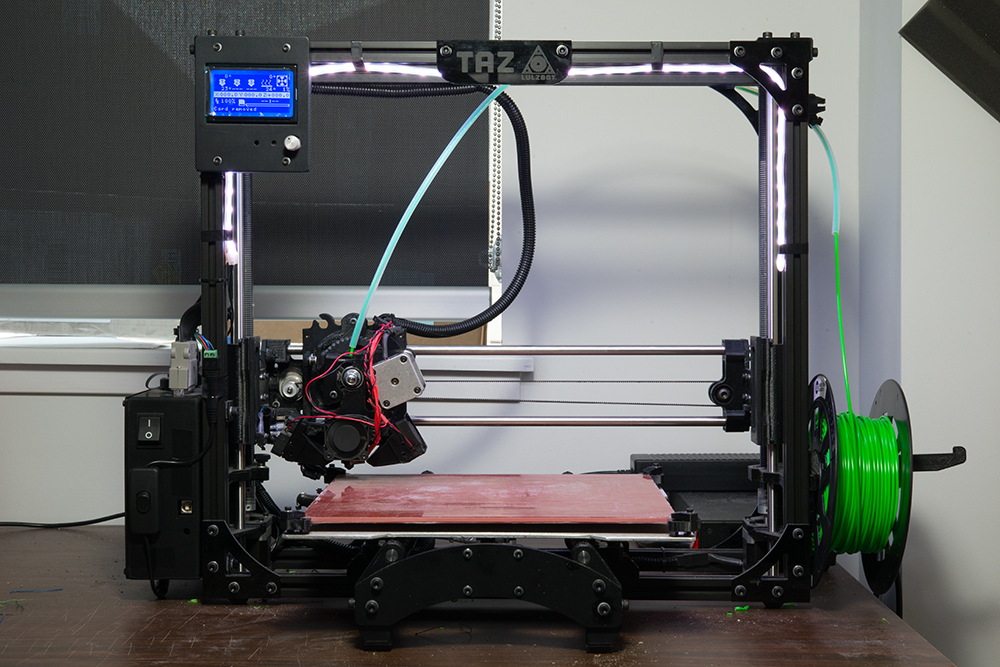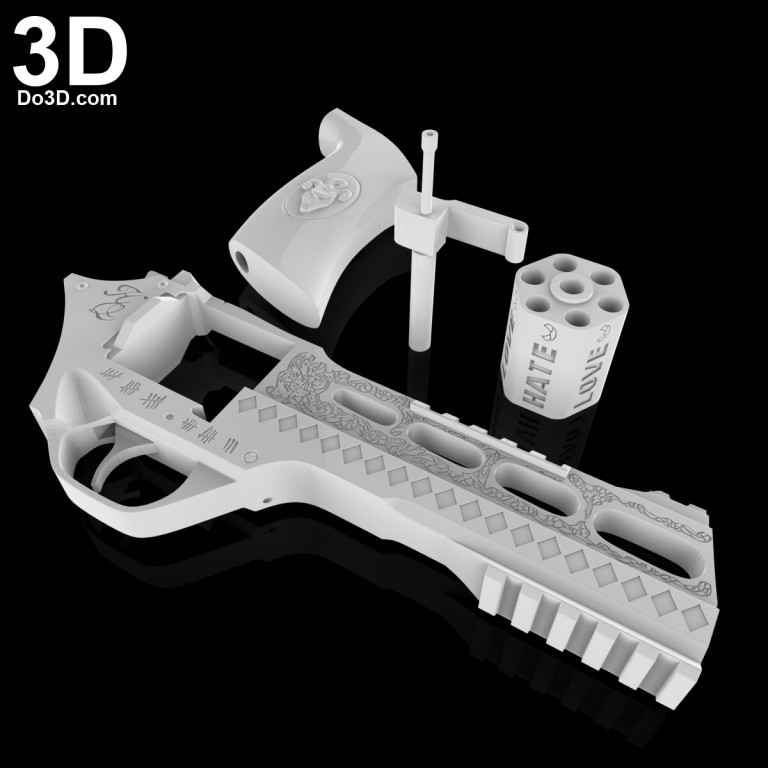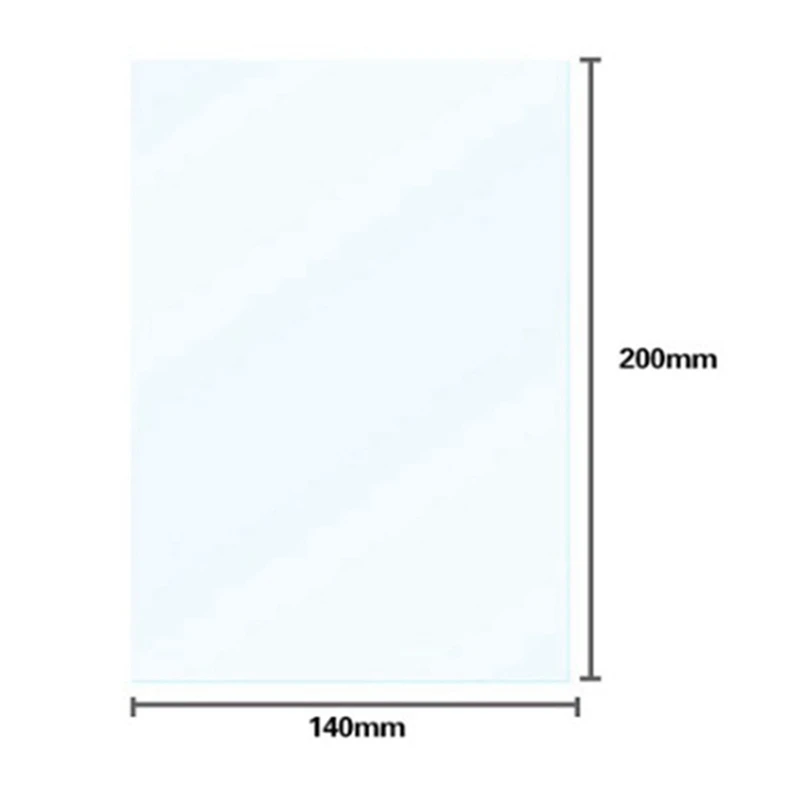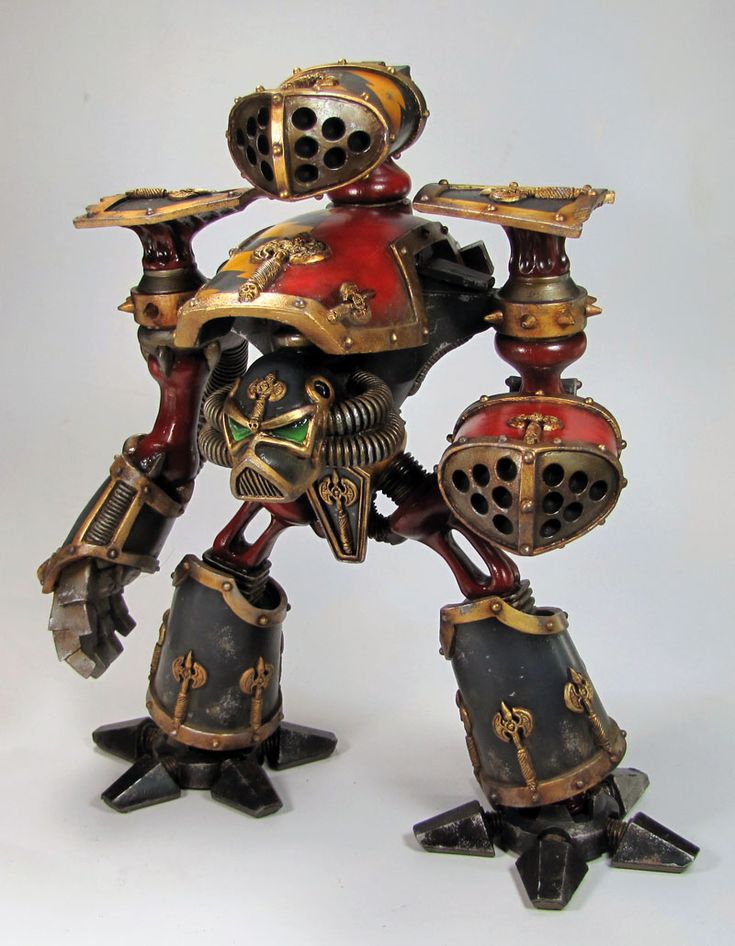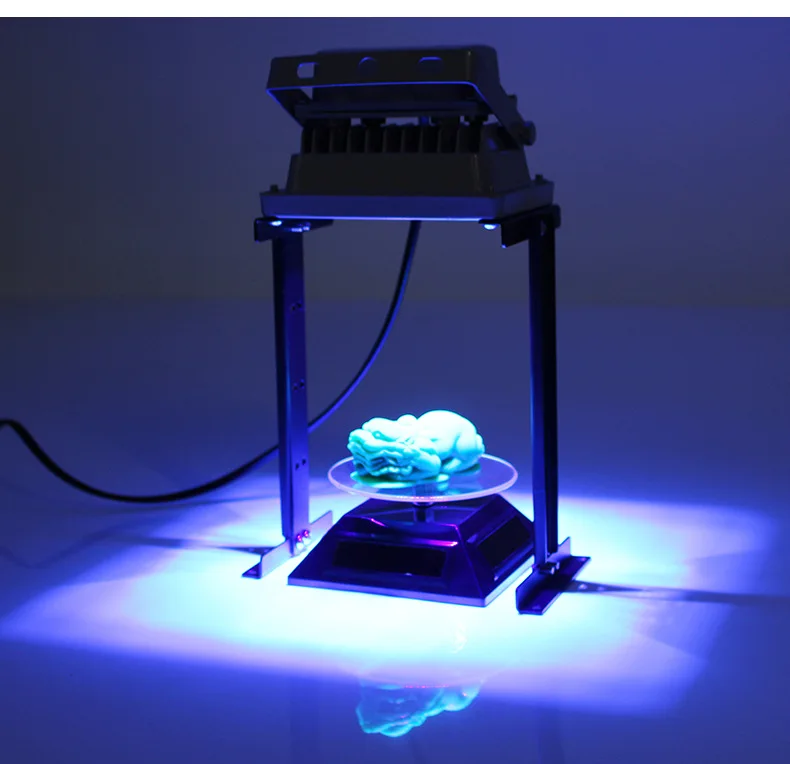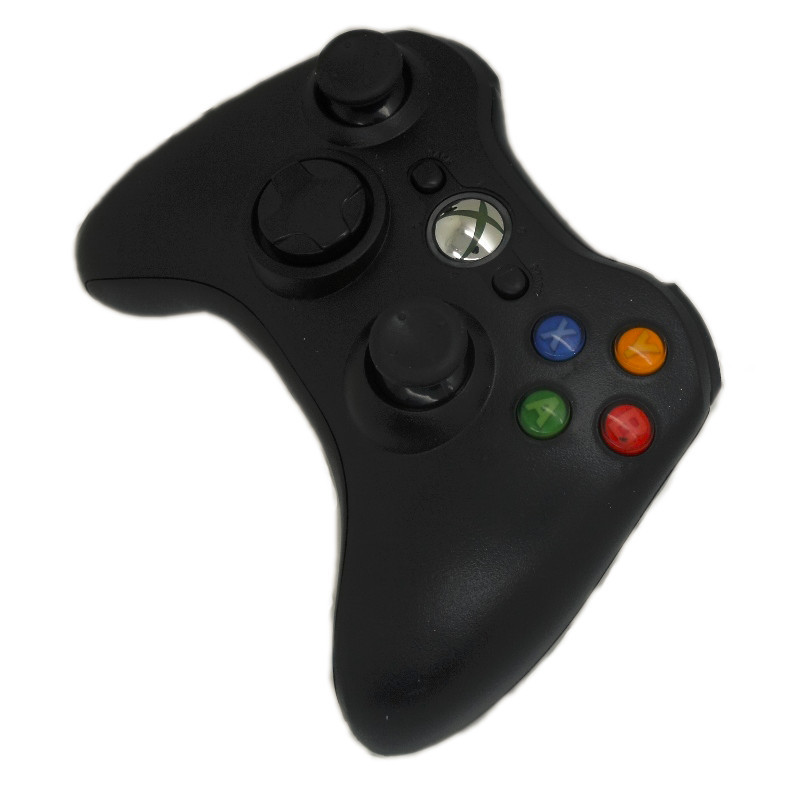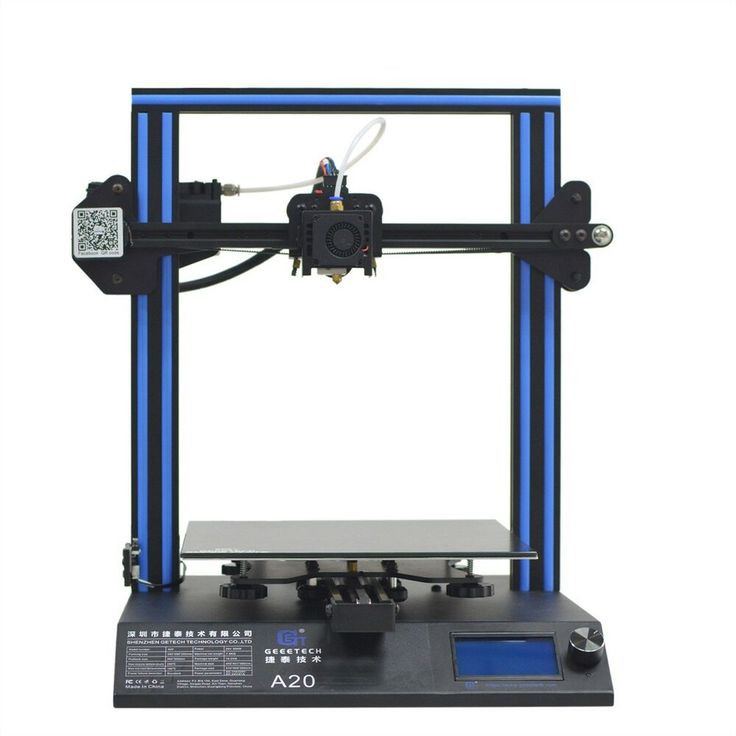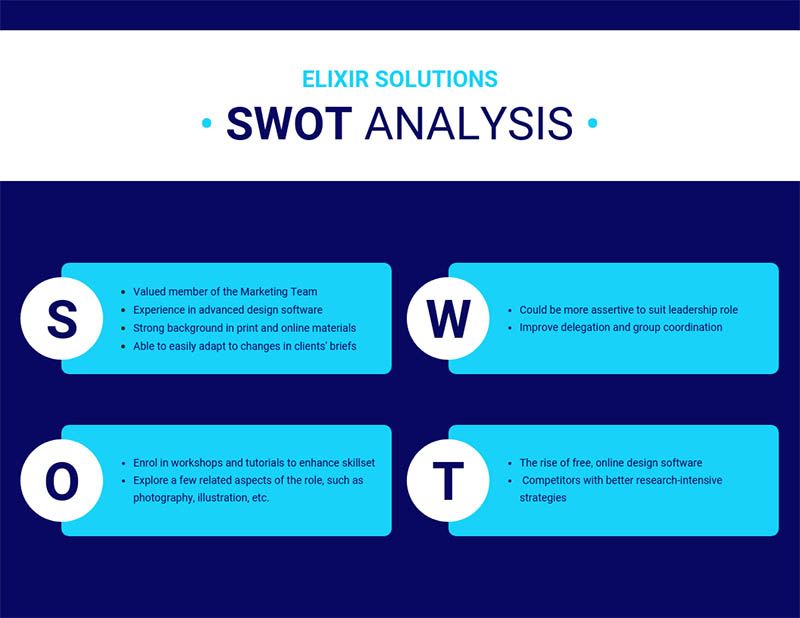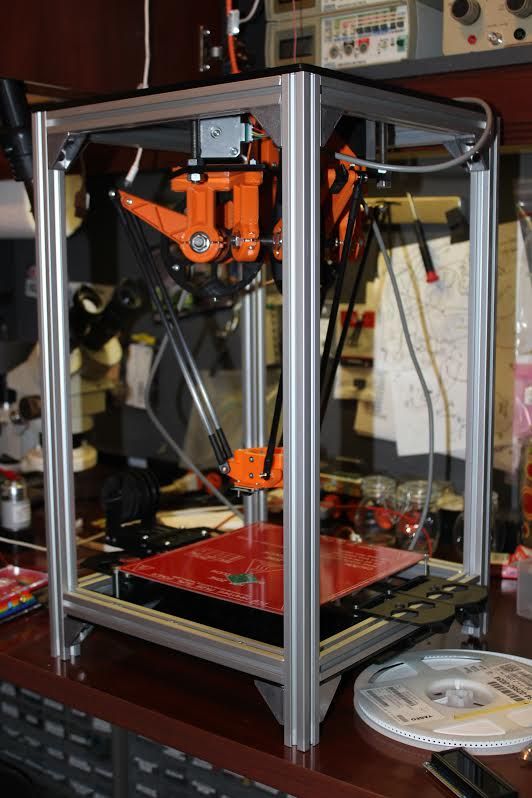Can 3d printers make clothes
What are the best projects?
3D Learning Hub
See all categories
Contents:
- Introduction
- Fashion and 3D printing: 3D printed fashion is the new revolution
- What are the best 3D printed clothes projects?
- 3D printing footwear
- 3D printed jewelry
- 3D printed bags
- Evolution of 3D printed clothes: What is the future of fashion?
Introduction
Fashion and 3D printing: 3D printed fashion is the new revolution
3D printing for the design aspect
Additive manufacturing is interesting for fashion as it allows to work more easily on fashion designs and to create amazing things for the fashion industry such as garments, ornaments, and meshes.
This technology is really giving a lot of freedom to the designers in terms of geometry. It is, for example, possible to create intricate designs for various projects inside the fashion industry. From shoes and accessories to 3D printed dresses, the fashion industry starts to embrace the full potential of 3D printing and to develop interesting objects.
Some of the garments developed thanks to 3D printing technology would have been too complex and expensive to create with another manufacturing method.
New considerations for the fashion industry
Sustainable manufacturing and eco-friendly products
There is obviously an evolution in the way that we are thinking about fashion and clothes manufacturing. New aspects are now taken into account and now, the reasons why designers are choosing 3D printing are changing: it is becoming important to use 3D printing for sustainable and eco-friendly purposes.
For instance, textiles are part of the waste problem around the world, that is why a lot of elements of the manufacturing process need to be rethought in order to be more eco-friendly.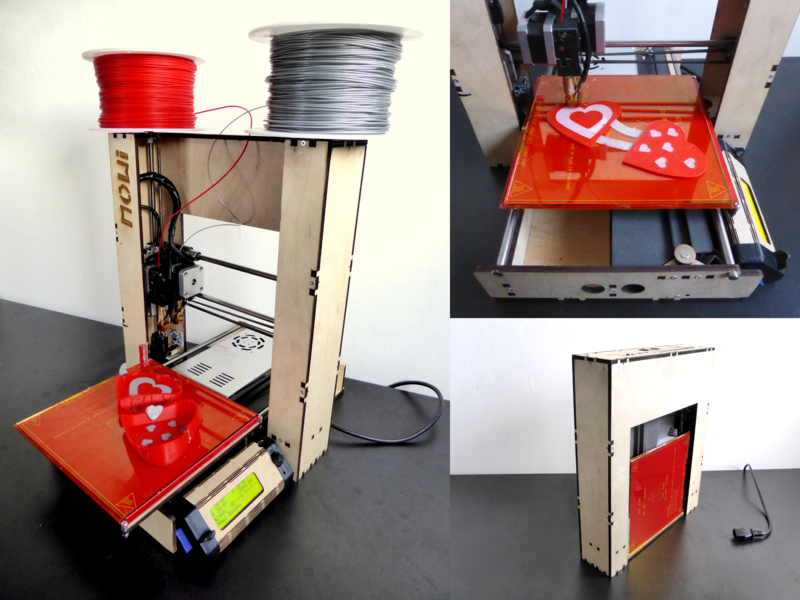 Using 3D printing allows to reduce waste, you only need to use the amount of material that is needed to create your project.
Using 3D printing allows to reduce waste, you only need to use the amount of material that is needed to create your project.
It is also a way to use some recycled materials for the manufacturing process. Adidas created a 3D printed midsole for one of its sneakers, made with recycled plastic found in the ocean. Creating new materials and using plastic in a more responsible way are new reasons to use 3D printing for fashion companies, and even for big brands such as Adidas.
3D printing comfortable clothes
The use of 3D printing to create clothes is evolving. It first has been used to create extremely complex and impressive pieces. The use of 3D printing in this sector was a way to push the boundaries of the fashion world to create outstanding projects, that were visually impressive.
Now some designers are more interested in using 3D printing to develop collections of regular clothes, using additive manufacturing as a traditional manufacturing method. They are not only using 3D printing for the design benefits but as an advantageous manufacturing method to create customizable and comfortable clothes. Additive manufacturing is a great way for all industries to improve their manufacturing process. It is allowing them to work on their prototypes with faster and cheaper methods, but also to produce customizable products in the end. These two elements are quite important in the fashion industry.
Additive manufacturing is a great way for all industries to improve their manufacturing process. It is allowing them to work on their prototypes with faster and cheaper methods, but also to produce customizable products in the end. These two elements are quite important in the fashion industry.
While using 3D printing, we can notice more freedom on the customization side. Indeed, additive manufacturing is the perfect technique for mass customization. We know that customization can be an expensive process in the fashion industry. Producing garments and accessories made to measure are made possible thanks to 3D printing.
3D printing could also totally help to create clothes adapted to the movement of all bodies! 3D printing is not only a manufacturing method for haute couture creations anymore.
What are the best 3D printed clothes projects?
The Spider Dress
The Spider Dress of Anouk Wipprecht has mechanical arms that extend and retract as a response to external stimuli when people approach.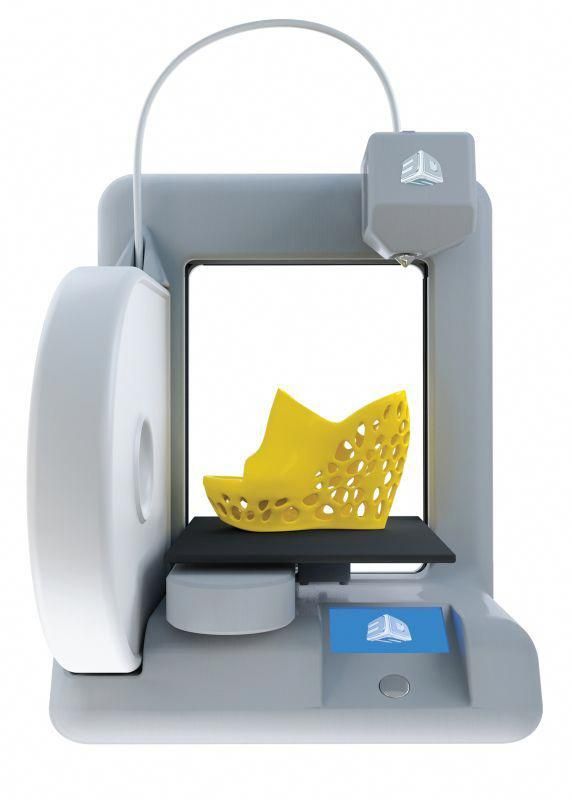 The wearer’s own breath will help to signal the defense posture of the robotic arms. The dress is fully 3D printed with the Selective Laser Sintering technology.
The wearer’s own breath will help to signal the defense posture of the robotic arms. The dress is fully 3D printed with the Selective Laser Sintering technology.
The Spider Dress
3D printing regular clothes
The idea of Julia Daviy is to use 3D printing to create biodegradable fashion, believing that we can change the way we produce clothes!
Her collection included 3D printed dresses and tops. Most of the time, the 3D printed clothes made by designers are not easy to wear. But it is not the case with the clothes 3D printed by Julia Daviy. She is really thinking about 3D printing as a new method to create garments without wasting a lot of textiles, and avoid the mass-production aspect.
credit: https://www.3dprint.com/212640/julia-daviy-3d-printing/
Multicolor 3D printing for garments
This dress is a piece made by the American designer Travis Fitch, with 30 different sections. It has been printed with a colorful multi-material. The material is flexible in order to respond to the movements of the body.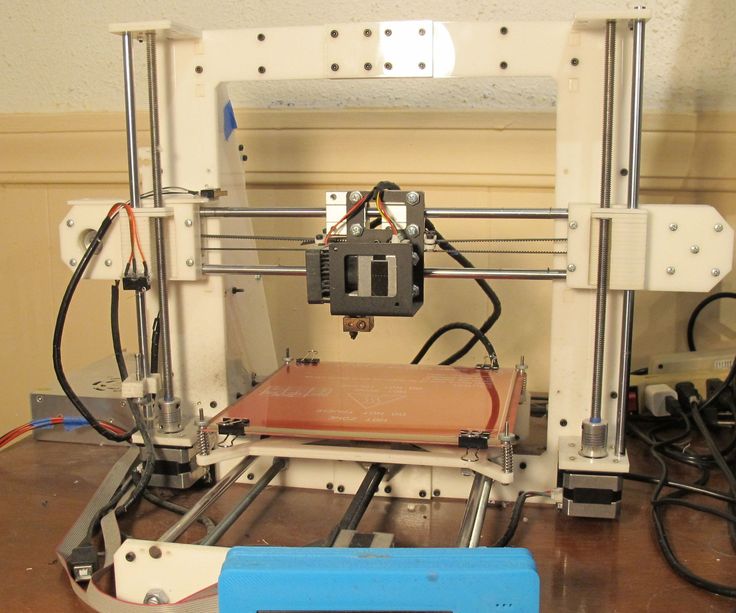 The 3D printing process is a good way to give life to objects with really complex designs and to make them wearable as traditional garments.
The 3D printing process is a good way to give life to objects with really complex designs and to make them wearable as traditional garments.
The use of color on this project is quite unique, 3D printing projects in the fashion world are often monochrome, and are not as colorful. This technique offers new possibilities as multicolor 3D printing is not often used in these kinds of projects.
credit: https://3dprintingindustry.com/news/3d-printed-dress-debuts-new-york-fashion-week-95736/
3D print knits
Ministry of supply developed a 3D printed knit blazer, a sustainable way to create garments that will last longer! The 3D printing process and the work on the 3D designs that they are creating are allowing to make pieces more adapted to the body and to its movements.
Their goal is to develop an agile supply-chain and create on-demand products that are more comfortable and durable. Their 3D printing technology is an eco-friendly method to create knits, and they are noticing a reduction of 35% regarding material waste.
New generation of 3D printed clothes collections
Danit Peleg is a designer who decided to create a fashion collection that she entirely 3D printed by herself. By doing that, she shows that 3D printers are great tools, allowing to rethink the manufacturing process of the fashion industry. The collection took her 2 000 hours to print completely.
https://www.3ders.org/articles/20150724-danit-peleg-3d-prints-entire-ready-to-wear-fashion-collection-at-home.html
Her goal? To create comfortable clothes that she could wear herself. Once again, we see the will of designers to create wearable 3D printed clothes.
3D printing, still useful to give life to outstanding designs
Alexis Walsh is a talented designer who created an impressive dress 3D printed using Selective Laser Sintering. The dress has 400 tiles assembled by hand. Here, 3D printing has been used to develop the design of the dress. It took at least six months to the designer to develop this impressive garment using 3D printing.
The 3D printed comfortable dress
We were talking previously about more comfortable clothes. Dresses made by designers are not what we can call comfortable, as it is not their primary goal. But do you know about the Kinematic dress? By 3D scanning her model, Jessica Rosenkrantz created a dress perfectly fitting her body.
By using this innovative manufacturing technique, the designer wanted to show a new approach of manufacturing for her fashion collection. Moreover, 3D printing is perfect to make several iterations for these kinds of dress, to be sure that they respond correctly to the movements of the model.
http://www.youfab.info/2015/youfab-award-ceremony-1.html
3D printing costume
It is now possible to use additive manufacturing to create costumes for the film industry, but also for video games. You might have heard about Sculpteo’s collaboration with Ubisoft for their Just Dance 2020 video game! The goal here was to create a lightweight costume, with an ambitious design but that shouldn’t hinder the dancer’s performance.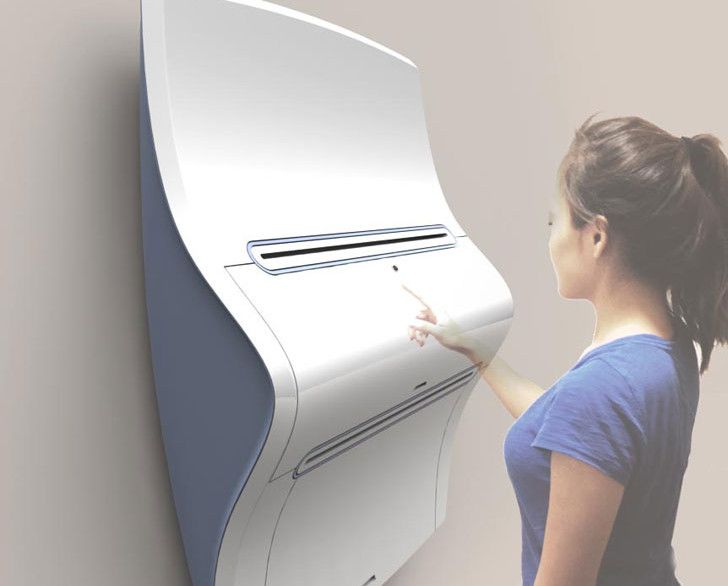
Get more info about this great project in the following video:
3D printed fashion for men
We can see that most of these creations are dresses or tops, intended for women. But what about men?
There is actually the 3D printed tie developed by Viptie 3D. This company is more focused on the mass customization aspect of 3D printing technology. They want to join luxury and high tech to create ties and bowties, as unique products for their customers.
3D printing footwear
More than garments, additive manufacturing is revolutionizing the footwear industry. Some important brands such as Adidas are making the most of additive manufacturing to develop impressive projects.
Adidas and the Futurecraft 4D
Adidas actually launched its Futurecraft 4D project: they create shoes with a midsole created in partnership with Carbon 3D, using a new process called Digital Light Synthesis (formerly known as CLIP).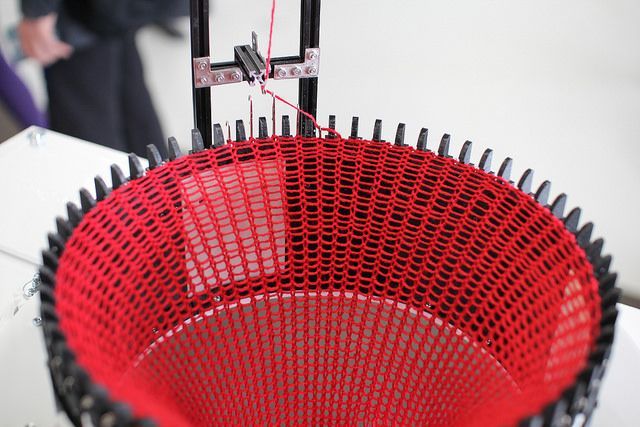 Thanks to digital light synthesis, oxygen-permeable optics, and liquid resin, this process can produce durable and resistant polymeric goods.
Thanks to digital light synthesis, oxygen-permeable optics, and liquid resin, this process can produce durable and resistant polymeric goods.
Using additive manufacturing in the footwear industry allows working on new designs to improve a previous product, for example. That is precisely what happened with this project, Adidas created an impressive midsole using a lattice structure!
This project is also showing an interesting aspect of the use of additive manufacturing. Indeed, these shoes are not only produced using 3D technology, but they are mass-produced using 3D printing! We can say that Carbon and Adidas are taking additive manufacturing a step further with this project.
Olivier Van Herpt developing the fully 3D printed shoe
For the moment, 3D printing is mainly used in the footwear industry to 3D print midsoles, which offers, once again, to get custom made products, adapted to any morphology. But is it even possible to 3D print an entire shoe? Designer Olivier Van Herpt is using 3D scans and 3D printing to create new shoe structures, making them unique, lightweight and really resistant.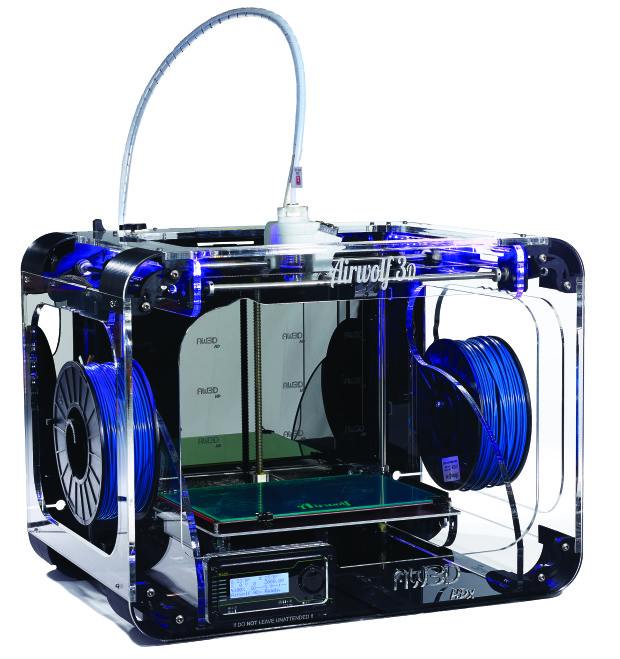 These 3D printed shoes guarantee you the perfect fit.
These 3D printed shoes guarantee you the perfect fit.
3D printed jewelry
3D printed jewelry is now becoming more and more common. 3D printing is a perfect method to launch a jewelry business, for both prototyping and production, additive manufacturing can be used to improve your product and process on many different levels! At Sculpteo, we offer great 3D printing technologies, suitable for the creation of your jewelry parts.
It’s possible to use metal 3D printing, with technologies such as Lost Wax Casting, and different materials such as Brass, Sterling Silver, or Bronze. These precious metals can be beneficial for your projects. Resin and plastic 3D printing can also be used for jewelry projects, Selective Laser Sintering or Polyjet technologies can be useful to create accurate parts.
If you don’t want to produce your jewelry using additive manufacturing, keep in mind that this technology can be used to create your jewelry molds. An interesting use of additive manufacturing is the creation of master 3D printed molds for your parts!
The Nervous System collection
This collection of rings, bracelet and necklaces called Nervous System is made with nature-inspired designs, structures that it would have been impossible to create without 3D printing.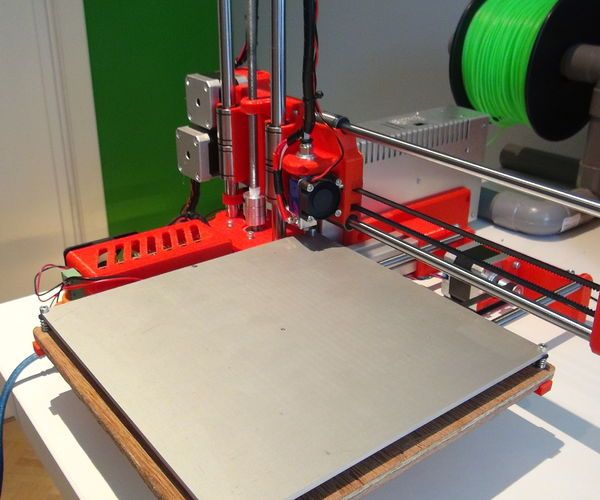 These jewelry parts are created using the Lost-Wax Casting process!
These jewelry parts are created using the Lost-Wax Casting process!
ABL’s 3D printed watch
Is it possible to 3D print a watch? ABL “Atelier le Brézéguet” is a french brand from Toulouse. This company is specialized in watches and used our 3D printing service to produce the black rings, on the top and the bottom of the watch. These parts are 3D printed using polyamide material.
3D printed bags
Accessories such as bags can also be produced using 3D technology. For example, the Italian brand XYZ Bag created a 3D printed handbag collection called “DADA”. These bags are customizable, thanks to the use of 3D printing.
Regarding the designs, 3D printing is offering great advantages for the development of bag projects: it is actually offering the possibility to play with geometries and try new things. Working on different structures, like implementing lattices, can be an effective solution to get lightweight but resistants bags!
Evolution of 3D printed clothes: What is the future of fashion?
Some companies are developing new techniques and new 3D printing materials such as Ministry of Supply who used a new method to create knit garments.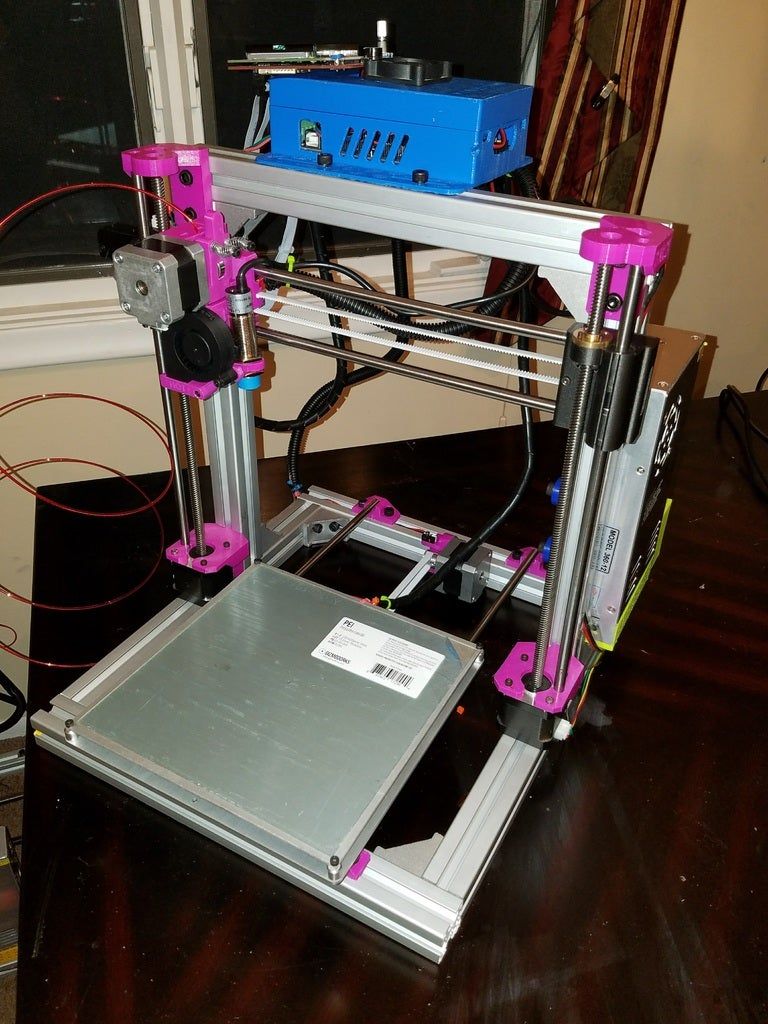 We can notice that some extraordinary 3D printed designs made for fashion shows are still present as the 3D printing technology is still really convenient to manufacture these unique pieces. But 3D printing tends to be more and more used to create clothes that anybody could wear. Indeed, now that we saw that the 3D printing technology is able to create intricate geometries for garments, comfort is becoming the key to new 3D printed fashion projects.
We can notice that some extraordinary 3D printed designs made for fashion shows are still present as the 3D printing technology is still really convenient to manufacture these unique pieces. But 3D printing tends to be more and more used to create clothes that anybody could wear. Indeed, now that we saw that the 3D printing technology is able to create intricate geometries for garments, comfort is becoming the key to new 3D printed fashion projects.
There is also a growth regarding the use of different 3D printing materials and techniques. In the future, metal 3D printing could be implemented to create some ornaments, but also laser cutting techniques! There are a lot of benefits and possibilities for designers who want to approach the laser cutting and 3D printing industry.
We can also see that the eco-friendly aspects offered by 3D printing are becoming quite important, as, for instance, recycled plastic and biodegradable materials can be used to 3D print some fashion parts.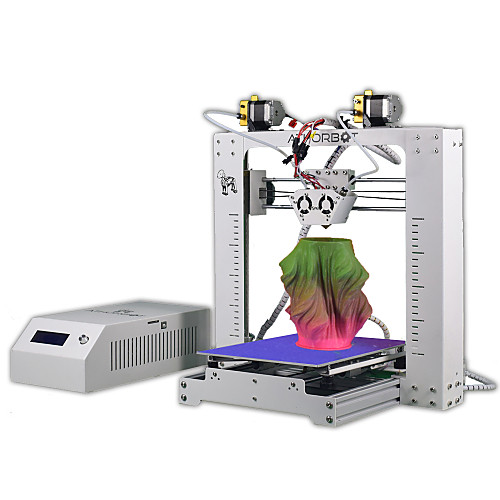 Soon, it could even be possible to use natural materials. Last but not least, we notice that the fashion industry is trying to push the boundaries of 3D printing, but is also implementing other great technologies such as electronics. It is now possible to 3D print smart fabrics, and more of these outstanding projects might be unveiled in the upcoming years!
Soon, it could even be possible to use natural materials. Last but not least, we notice that the fashion industry is trying to push the boundaries of 3D printing, but is also implementing other great technologies such as electronics. It is now possible to 3D print smart fabrics, and more of these outstanding projects might be unveiled in the upcoming years!
If you have a 3D printing idea and want to bring it to life right now, we can help you to choose the perfect CAD software for your fashion project, thanks to this blog post. Then, you will be able to upload your 3D models on our online 3D printing service.
Related Topics
- Return to Top
Get the latest 3D printing news delivered right to your inbox
Subscribe to our weekly newsletter to hear about the latest 3D printing technologies, applications, materials, and software.
Can You Make Clothes with a 3D Printer? – 3D Printerly
Making clothes with a 3D printer is something that people think about, but is it actually possible to do this? I’ll answer that question in this article so you know more about 3D printing in the fashion industry.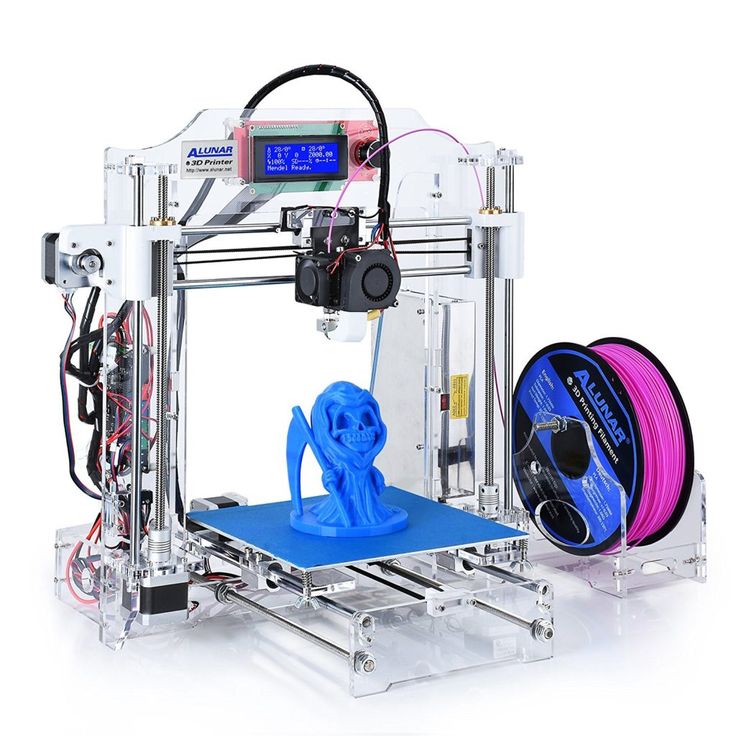
Keep on reading for more information about making clothes with a 3D printer.
Can Clothes Be 3D Printed? Making Clothes with a 3D Printer
Yes, clothes can be 3D printed, but not for standard everyday wear. They are more of a niche or experimental fashion statement that have been seen on runways and in the high fashion industry. It’s even possible to use a 3D printer setup to spin real yarn into clothing, using a method of layering and connecting.
Sew Printed did a great video explaining five different ways to 3D print fabrics and textiles, which you can check below.
Check out some examples of 3D printed clothing:
- Triangulated Dress
- Fancy Bowtie
- Chainmail-Like Fabric
- MarketBelt
As with any new technology, people are always experimenting and finding out new ways to produce clothes from 3D printers.
One user described their own method for making textiles with a 3D printer using a wide range of yarns (synthetic and natural), that doesn’t produce waste as yarns can be disassembled and reutilized.
The fibers aren’t stitched or woven, the yarn is actually melted but not entirely fused in a way it is still a continuous strand when applied.
They are calling the fabric 3DZero as it is 3D printed and produces zero waste, once you have the raw materials you can just re-use them. Their goal is local production on demand and fully personalized.
Best 3D Printed Clothing Designers – Dresses & More
Some of the best 3D printed clothing designers and brands are:
- Casca
- Daniel Christian Tang
- Julia Koerner
- Danit Peleg
Casca
Casca is a Canadian brand, trying to implement 3D printing fashion as a sustainable alternative to fast fashion. Casca’s philosophy is centered around the motto “less things that do more”.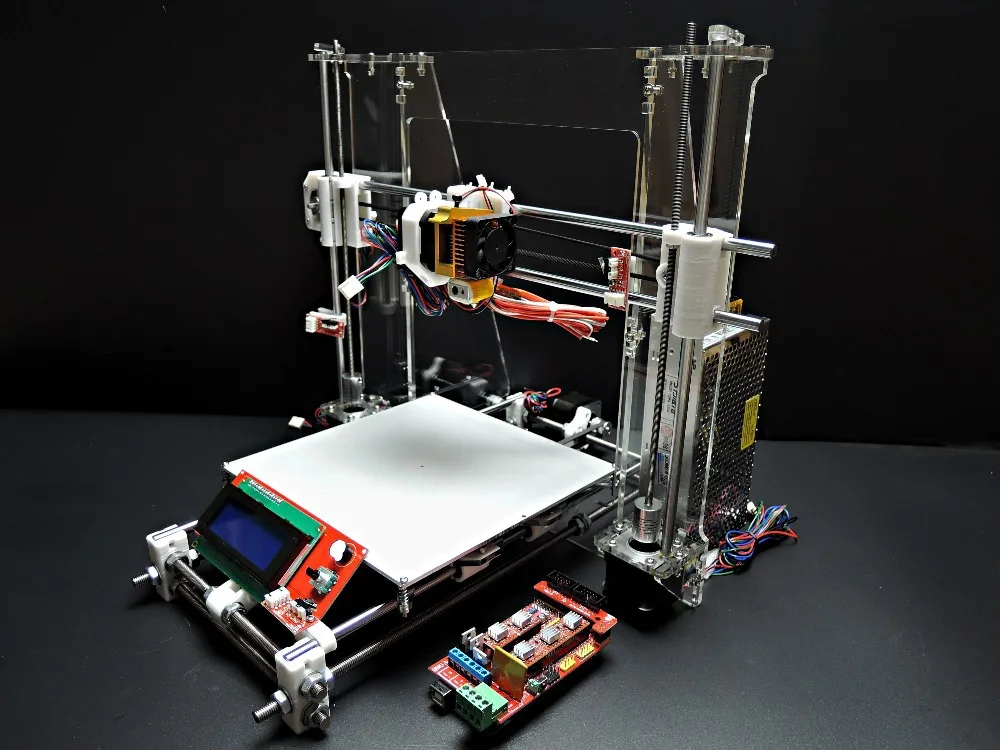
One pair of their shoes is meant to replace several pairs of normal shoes. For that to work, Casca created 3D printed custom insoles. The customer selects the desired footwear and size and after that, you will download the Casca app to get a scan of your feet.
When the scan is confirmed and complete, they will craft the flexible, custom insole via 3D printing along with the ordered design and size.
So that they won’t produce further waste and consumption, Casca produces only in small batches, reordering whenever the styles have sold out. They hope to fully decentralize the supply chain by manufacturing 100% custom-fit shoes in-store by 2029.
Casca founders talked with ZDnet on video and explained their entire vision when building a brand based on 3D printing technology.
Daniel Christian Tang
Another big market in 3D printed wearables is jewelry.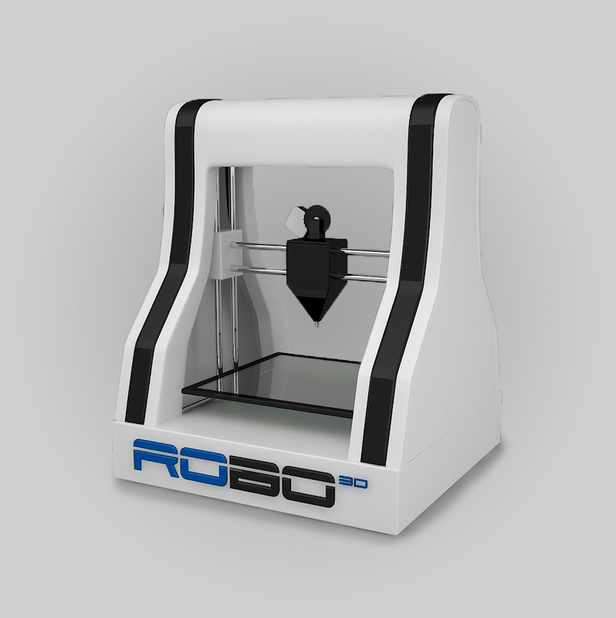 Daniel Christian Tang, a luxury jewelry brand, uses architectural modeling software in tandem with 3D digital manufacturing technology.
Daniel Christian Tang, a luxury jewelry brand, uses architectural modeling software in tandem with 3D digital manufacturing technology.
They design rings, earrings, bracelets and necklaces, and they are cast in gold, rose gold, platinum and sterling silver.
You can see their founders talking about the world of 3D printed luxury jewelry just below.
One user has expressed how he thinks 3D printing is here to stay in the jewelry industry, mainly for its job creating waxes.
One user made a lovely ‘floating’ necklace that looks really nice.
I 3D printed a ‘floating’ necklace. 🙂 from 3Dprinting
A lot of the 3D printed clothes that have been showcased have been there for novelty but there is a real market for 3D printed shoes and prescription glasses, among other things.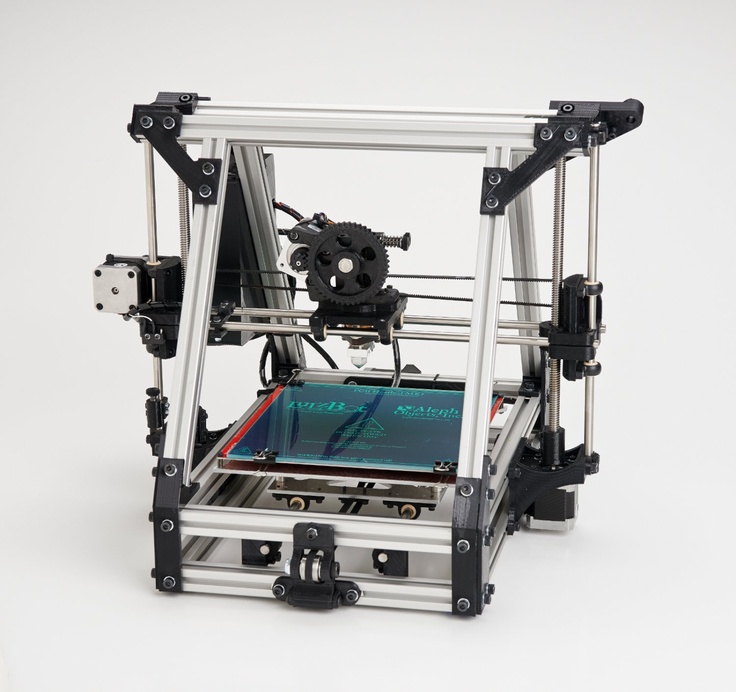
3D printed fashion
Julia Koerner
Another designer making use of 3D printing in clothing design is Julia Koerner, who worked on 3D printed clothing for the marvel movie “Black Panther”, creating the head pieces for many of the Wakanda residents, as she explains in the video below.
Danit Peleg
Danit Peleg, a design pioneer, started to redefine the status quo by designing printable clothing with sustainable materials and using techniques that cut out the inflating supply chain.
What makes Peleg’s highly desired fashion line truly is that not only can customers personalize their pieces, but they receive the digital files of the clothing so they can have it printed through a 3D printer closest to them.
Check out Danit making 3D printed clothing in her own home.
In 2018, Forbes recognized Peleg as one of Europe’s Top 50 Women in Tech, and she was featured in the New York Times and the Wall Street Journal. Danit has been very passionate about creating a new wave of sustainable 3D printed clothes.
She is using her passion to invest time in learning about 3D printing in ways that could revolutionize the industry.
A breakthrough came for Danit when she began using a durable and flexible filament called FilaFlex, one of the most elastic filaments reaching 650% stretch to break. The filament was a perfect match for Danit’s flexible creations.
After a lot of research, Danit selected the Craftbot Flow Idex 3D printer since it was able to print FilaFlex well, having great efficiency and precision.
The Craftbot team continues developing new software and hardware technologies for filament printing, including Craftware Pro, a proprietary slicer program that offers tons of innovative features for professional printing applications.
Danit explains that and much more at her TED talk about the 3D print revolution in fashion.
Is 3D Printing Clothes Sustainable?Yes, 3D printing clothes is sustainable because it is an environmentally friendly option for those in the fashion industry. You can use recycled plastic to create many items and many fashion distributors are using biodegradable materials to 3D print their clothes.
You can also recycle your own 3D printed clothes, have manufacturers work with less inventory, reduce waste production and change the impact of the fashion industry on the environment.
One of the biggest benefits to this is how you can reduce carbon emissions through not having to transport the 3D printed clothing far distances. If you have the 3D printing file, you can find a 3D printer close to you and create it locally.
That’s why 3D printed clothing is considered one of the most promising technologies when it comes to making the fashion world more sustainable as the never ending demand of the fast fashion industry adds only more pressure on cheap labor around the world.
Many big brands are coming up with new processes to improve or change their production models, trying to be more eco-friendly.
Technology like 3D printing has the ability to create something new for the industry, and does it sustainably. If the brands want to improve production and their distribution of goods, they must head towards innovative technologies that will really disrupt the sector.
At least one user is looking to never buy clothes again after learning how to 3D print his own shirt. He even made the file of his newly 3D Printed Shirt V1 available online.
He even made the file of his newly 3D Printed Shirt V1 available online.
Check out the video he made below.
I made a fully 3D printed shirt to go with my 3D printed necktie! Never buy clothes again! from 3Dprinting
With billions of clothing items being manufactured every year, finding effective and sustainable solutions to the global clothing demand is crucial as we continue to face market issues. It is necessary for us to innovate and adopt more sustainable and cost-effective ways of making our clothes.
3D printing also allows you to salvage and recover clothes faster than you would if you traditionally sewed them.
This happens because the threads are molded together instead of sewn, and you can easily separate them if you make any mistakes while printing, significantly reducing the likelihood of your thread breaking.
You can also disassemble the fabric and get back yarns for re-using as explained by one user.
3D Printing fabrics/clothes and how we are doing it! Here front panel of our TShirt.
from 3Dprinting
Benefits of 3D Printing in Fashion
Some of the main benefits of 3D printing in fashion are:
- Recyclability
- Minimal Inventory
- Sustainability
- Custom designs
Recyclability
One of the nicest aspects of 3D printing clothing is that these clothes are more recyclable. 3D printed items can be turned into powder with the help of the proper machinery and then can be used to create more 3D items.
That way, a piece of clothing can last a very long time as it can be recycled over and over again.
Minimal Inventory
3D printing also provides an innovative solution to one of fashion’s biggest problems: overproduction. Printing on demand produces less waste and reduces the amount of unused clothes.
That means minimal inventory, you only make what you sell.
This reduces the number of manufacturers making clothes in large quantities with many items that never sell and end up generating waste and pollution.
Sustainability
According to Julia Daviy in her video below, 3D printing can drastically decrease the textile industry’s terrible impact on local wildlife and farmland and the communities that surround it.
A lot of designers use 3D printing for these reasons. It is a more sustainable method, creates less inventory and moves the final product faster. It is a more eco-friendly way to create clothes because it destroys unused materials and fabric.
If you are printing a shirt, you’ll use the exact number of materials needed. No need to buy or waste extra fabric by throwing off additional materials as you would when sewing.
It’s an additive manufacturing method, which means you don’t have the same amount of waste afterwards.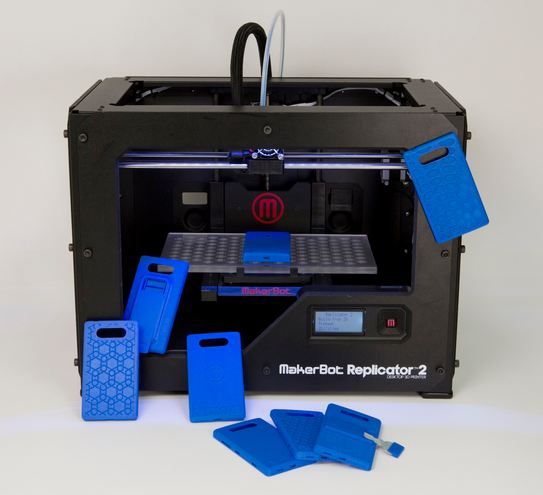
Custom Designs
One of the biggest benefits of 3D printing your own clothes is choosing your own design, having total control over size and shape and creating your own custom clothes that no one else in the world will have, unless of course, you decide to share the file online!
As people are slowly starting to 3D print some clothes at home, one user 3D printed a bikini top and says it turned out pretty comfortable!
Naomi Wu made a whole video showing the process of her creating a 3D printed bikini top.
Disadvantages of 3D Printing in FashionSome of the biggest disadvantages of 3D printing in fashion are:
- Time
- Complex design
- Environmental impact
Time
Time is one of the biggest disadvantages of 3D printing in fashion.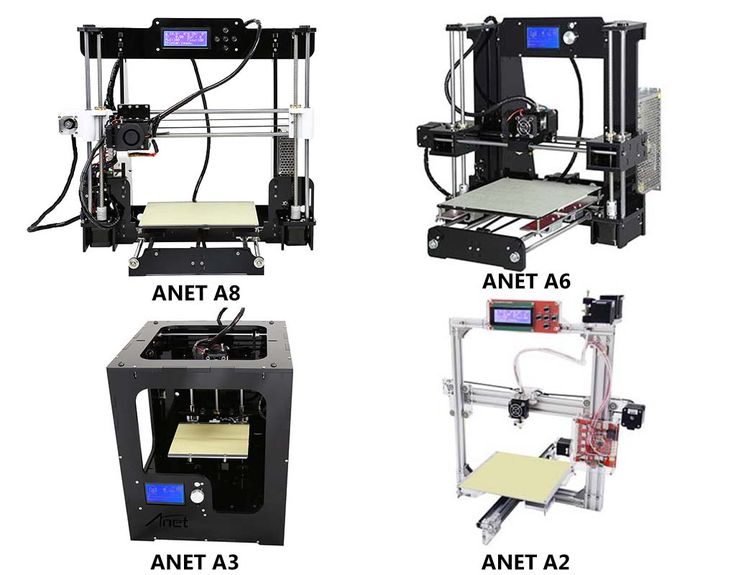 Peleg’s custom 3D printed bomber jackets take an astonishing 100 hours to print.
Peleg’s custom 3D printed bomber jackets take an astonishing 100 hours to print.
Even with the advances the technology has seen, which improved printing time from days to minutes, a complex clothing piece can still take a long time to be 3D printed.
Complex Design
There are more challenges to 3D print clothes yourself. You need a complex design, that is strong and robust, and you might need to manipulate the materials and do some hand fashion to perfect your design.
While many people prefer to use large-formats to 3D print clothes, you can choose from multiple approaches. Creating several small hollow objects and locking them together will create a weaving pattern. You can then change the shape and size, getting your own custom design.
Changing your 3D printer’s settings and removing the walls from your objects can also help to create a flat fabric. Several users also suggest to print unheated when printing onto fabric to avoid the chance of melting.
Environmental Impact
3D printed clothes are a lot more eco-friendly than the rest of the fashion industry, but 3D printers also create waste that can not be disposed properly as some printers generate tons of plastic from failed prints.
One user voiced worry about the environmental impact of 3D printers. Some materials like PETG are very easy to recycle, while others can be harder to do.
While many big brands move to start making their own 3D printed outfits or accessories, from Nike to NASA, it still may take a while for the everyday consumer to see it in the shop around the corner.
Still, advances are being made in filament research creating new possibilities for texture and flexibility. For now, you can create rare and individual clothes using a 3D printer with more control over design and sizing, but we still will be stuck with fast fashion for a while.
4 ways to use technology in clothing
Sci-fi movie clothes are slowly becoming reality. 3D printed items, heated jackets, medical pajamas and clutches that broadcast your tweets - we tell you what fashion designers are doing with new technologies.
3D printing to make shoes and accessories faster
3D printers print everything from houses to human organs.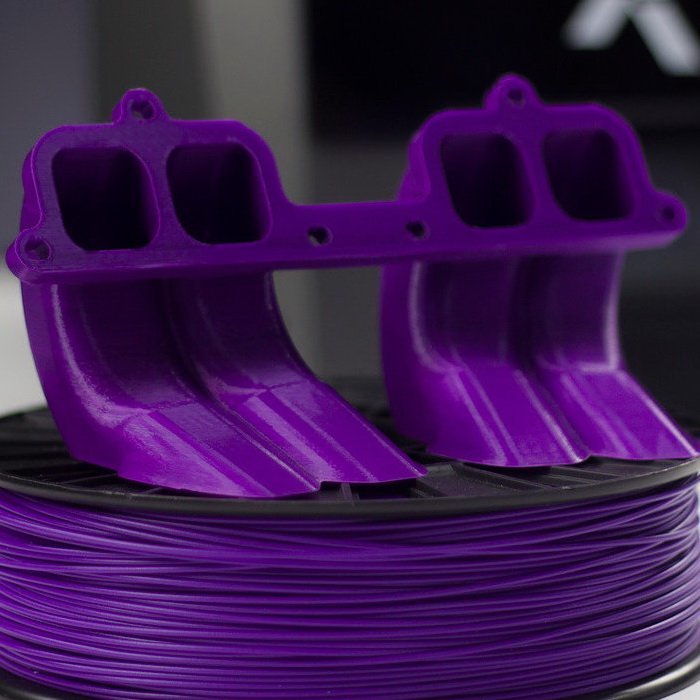 For clothing designers, 3D printers allow them to control the density of the material, print things without seams and create unusual shapes and patterns that standard fabrics cannot support.
For clothing designers, 3D printers allow them to control the density of the material, print things without seams and create unusual shapes and patterns that standard fabrics cannot support.
Printed clothes boomed in 2013, when design house ThreeASFOUR launched models in unusual plastic dresses onto the runway. But a problem arose: the brand wanted to make clothes more practical and durable with the help of new technology, but it turned out the other way around. Models in outfits could not even sit down: the dress would crumble.
The fact is that the plastic used for 3D printing is not as mobile and plastic as ordinary fabric. When worn, it either crumbles, or tears, or simply hinders movement. Even what can be made elastic and durable for a lot of money is hard to put on: the “fabric” sticks to the body and is unpleasantly felt on the skin.
Photo: threeASFOUR
Photo: Danit Peleg
As a result, printed clothes are not yet suitable for everyday wear. However, 3D printing can be mixed with traditional fabrics, for example by weaving plastic fibers into wool. In this case, unusual volumetric patterns are obtained. So, for example, does the British brand Pringle of Scotland.
However, 3D printing can be mixed with traditional fabrics, for example by weaving plastic fibers into wool. In this case, unusual volumetric patterns are obtained. So, for example, does the British brand Pringle of Scotland.
3D printers are used by manufacturers of accessories, jewelry and footwear. The main plus for them is the ability to control the work at each stage and create products quickly. For example, in early 2018, Adidas released a limited-edition line of Futurecraft 4D athletic shoes with startup Carbon. The sneakers took 11 months to produce instead of the usual 18.
Another example is the Danish eyewear brand Monoqool. The company prints glasses without a single screw, and they weigh no more than 10 grams. Monoqool takes a day to create one pair.
Smart fabrics - to create an unusual design and increase the functionality of things
Protecting the buyer from the weather is no longer enough. They want something else from clothes: for example, that they change color, glow in the dark, transmit commands to a smartphone, or even increase in size. All this can be done by smart fabrics.
All this can be done by smart fabrics.
Smart clothing first went from the lab to the masses in 2002, when design house CuteCircuit unveiled HugShirt at New York Fashion Week, a T-shirt that conveys the feeling of being hugged from a distance using Bluetooth. Since then, the brand has released a T-shirt for people with hearing impairments that translates live music into tactile sensations, a mirrored clutch that broadcasts messages from social networks, and a dress with built-in LEDs that react to movement.
Photo: Cutecircut
Photo: Rainbow Winds
Photo: Cutecircut
Smart fabrics are used for both aesthetics and functionality. In the first case, LED panels are often sewn into textiles, but they can also experiment. For example, clothes from the British brand Rainbow Winters react to the environment and the movements of the wearer. The brand has futuristic dresses that change color when in contact with water or when stretched.
In addition, tissues may be sensitive to infrared radiation.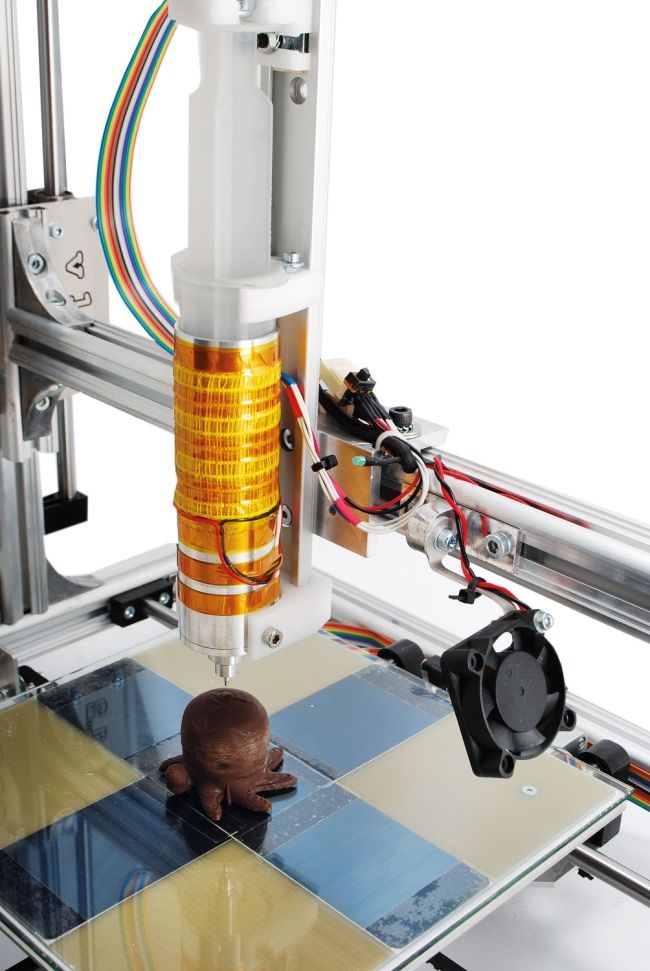 Manufacturers of sportswear, such as snowboarding or skiing clothing, often work with them. The pioneers were Thermolite. Their clothes absorb sunlight and turn it into heat, which is retained under clothing. Because of this, sports jackets are lighter and do not have to wear many layers that hinder movement under them.
Manufacturers of sportswear, such as snowboarding or skiing clothing, often work with them. The pioneers were Thermolite. Their clothes absorb sunlight and turn it into heat, which is retained under clothing. Because of this, sports jackets are lighter and do not have to wear many layers that hinder movement under them.
Electronic textiles - to turn clothes into gadgets
Smart fibers can do more than regulate temperature or change their design. Some fabrics turn clothes into extensions of smartphones. An example of this is the Commuter Trucker Jacket, which Levi's launched with Google in 2017. To create it, they used "electronic yarn": cotton threads intertwined with metal alloys. This combination made traditional Levi's denim electrically conductive.
A sensor spot was placed on the sleeve of the jacket, which reacts to movements and transmits commands to the phone using Bluetooth. To change the volume of the music on the headphones or check how far to the destination, the cyclist does not have to take his eyes off the road to the phone.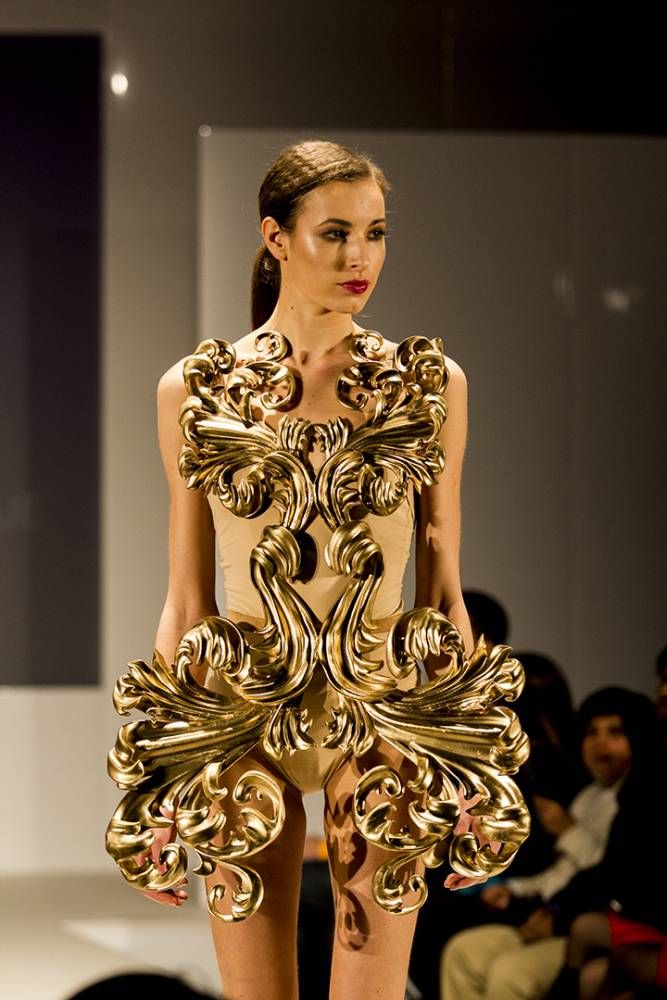 It is enough to touch the sleeve or use certain gestures.
It is enough to touch the sleeve or use certain gestures.
Medical breakthroughs to make clothing heal and protect against disease
Some brands are using technology to make clothing antibacterial. For example, the Danish brand Organic Basics adds silver threads to underwear and tracksuits, which are traditionally used for disinfection. Thanks to them, clothes acquire antimicrobial properties and do not absorb unpleasant odors. In addition, such things can be washed less frequently.
Photo: Organic Basics
Photo: Organic Basics
The American brand Under Armor is a bit more complicated. In early 2018, the company launched a line of recovery pajamas lined with bioceramic. The interlayer absorbs body heat, converts it into far infrared radiation and sends it back to the sleeping wearer. This helps cells recover faster. Such properties of infrared energy have long been used in saunas, but technological pajamas will allow you to treat a tired body literally without getting out of bed.
Cover photo: Daria Ratiner
3D-printed clothes: why haven't manufacturers made them mass-produced yet?
ThreeASFOUR showcased their 3D printed clothing collection for the first time at a fashion show at the Jewish Museum in New York. The dresses on the models were patterned and looked ephemeral, like the robes of robotic angels. One was woven from white, angular bubbles, which gave the impression that the girl had just taken a bubble bath.
But the girl who showed this dress to the world could not sit down, otherwise the dress would have broken. “The model wearing the dress was very unhappy,” said Bradley Rothenberg, a 3D architect who collaborates with threeASFOUR founders Gabi Asfor, Angela Donhauser and Adi Gil.
ThreeASFOUR dress at the fashion show at the Jewish Museum.
It happened in 2013 when threeASFOUR began to realize that in order to achieve the goal, they would have to take a step back. They did not even think that they would create such an impractical piece of clothing.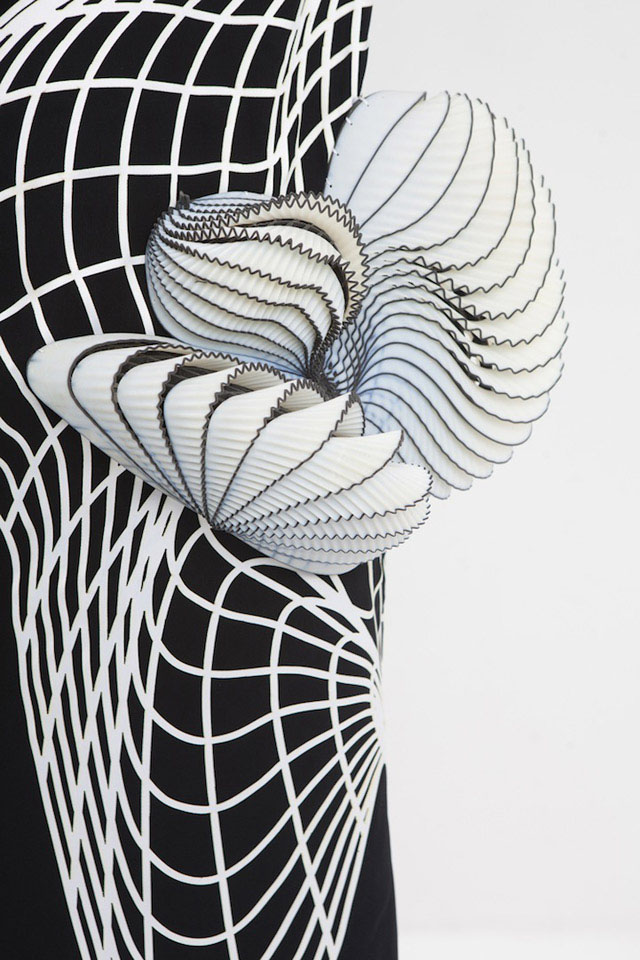 On the contrary, they wanted to create an outfit worthy of a superhero. They dreamed that the fabric they printed would become invulnerable to bullets and fire, retain heat and protect the wearer from stress. They dreamed that people would start buying their clothes as soon as they hit stores.
On the contrary, they wanted to create an outfit worthy of a superhero. They dreamed that the fabric they printed would become invulnerable to bullets and fire, retain heat and protect the wearer from stress. They dreamed that people would start buying their clothes as soon as they hit stores.
But time has passed. With the Silicon Valley elite building personal bunkers, refugees pouring across the border into Canada, and Margaret Atwood back in vogue, threeASFOUR's vision is as close to reality as an apocalyptic dystopia. But if everyone has access to the stocks left on Doomsday, becoming a superhero is still unrealistic.
And the reason is quite simple. Thanks to thousands of years of experience, tailored clothes are more practical and comfortable than those printed by a 3D printer. But that doesn't seem to be stopping threeASFOUR and other designers.
“In the fashion world, you can control the patterns and structure of a dress to get the look you want,” Rotenberg says. “The problem is that right now it’s just a possibility. So I think Gaby Asfor is the most interesting person in the industry. We need people who will push the boundaries, striving to show the new.”
“The problem is that right now it’s just a possibility. So I think Gaby Asfor is the most interesting person in the industry. We need people who will push the boundaries, striving to show the new.”
The vision of Gabi Asfor is evident in his work. He became interested in 3D printing in 2009 and has been experimenting with the internal structure of fabrics ever since.
Traditional fabric has two dimensions: the threads are arranged horizontally, vertically and diagonally in a certain way to create a weave. Asfor, who has a degree in mechanical engineering and architecture from the University of Maryland, worked with Donhauser and Gil to come up with a three-dimensional weave that was planned to be laser-cut. The desire to give fabric a third dimension led them to 3D printing.
“The most innovative recent invention in the industry is the four-way stretch fabric,” says Asfor. “But ordinary fabric can only stretch in the X and Y planes. 3D printing will allow the material to stretch in the Z plane as well. ” He believes that such a fabric will be better breathable, less restrict movement, and will not have folds.
” He believes that such a fabric will be better breathable, less restrict movement, and will not have folds.
ThreeASFOUR was interested in 3D printing, which led them to collaborate with Materialise, a 3D printed model company, and Rothenberg, who came up with 3D printed wings for the Victoria's Secret fashion show in 2013.
“When we first started, Gabi kept asking, “Can you print fabric? What material will be needed for this?” Rotenberg says. It turned out that this would not be easy.
Pangolin dress from the Biomimicry collection. Source: Backchannel
The main problem is that the materials used for 3D printing are stiffer than regular fabric. ThreeASFOUR experimented with the structures of various materials, trying to add elasticity to them, but any printed model came out very fragile.
But new materials have arrived, and ThreeASFOUR worked with Stratasys and Travis Fitch to design dresses like Pangolin for their new fall 2016 collection, which they call Biomimicry. It took 500 hours to print (not including assembly) Pangolin! The dress, named after a scaly mammal, was reminiscent of dark armor (Björk appeared in it during a tour in Australia last year). To create the "scales", the designers used an algorithm that simulates cell division, thus obtaining an intertwining pattern.
It took 500 hours to print (not including assembly) Pangolin! The dress, named after a scaly mammal, was reminiscent of dark armor (Björk appeared in it during a tour in Australia last year). To create the "scales", the designers used an algorithm that simulates cell division, thus obtaining an intertwining pattern.
On the ground floor of the ThreeASFOUR studio, there are employees who work with the most ordinary sewing machines. The dress itself is located on the next floor. Up close, the Pangolin bib, detached from the other parts of the dress, is somewhat reminiscent of a bicycle tire that has been cut to look like fish scales (it even wiggles like a fish tail). Such a deflection was not possible a few years earlier.
Asphor hands me a piece of another dress, a Harmonograph modeled after a sound wave. It was made from a rubber mesh that can expand and contract like a pillow-top mattress. The bottom of the dress shrinks when a person sits down and returns to shape when they stand up.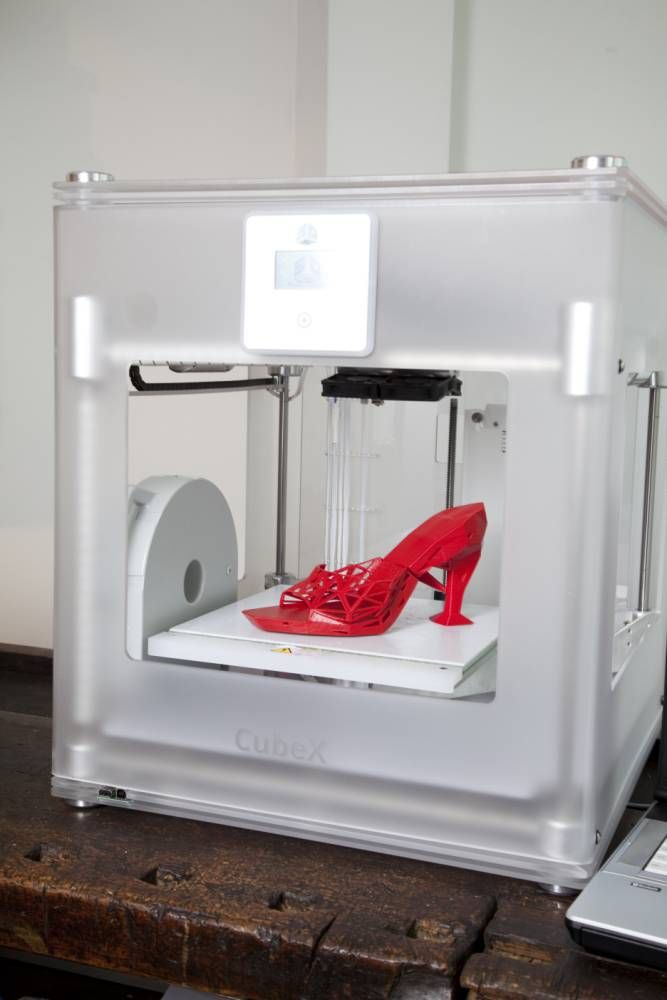
Harmonograph dress from ThreeASFOUR. Source: Instagram
Thanks to this flexibility, 3D wearers can now sit comfortably, although comfort is far from ideal. “Matter resembles artificial skin. It is not very pleasant to the touch and, in addition, sticks to the skin, ”says Rotenberg.
The idea of making printed clothes gained popularity at the beginning of the 21st century, but developed rather slowly.
Few people know this better than Aaron Rowley, founder of Electroloom, a 3D printed clothing startup. At first, many well-known brands were interested in his work, but gradually, one by one, they left. “There was an idea that people could print tools at home,” says Rowley, referring to the days when there was a lot of hype around 3D printing. It was believed that clothes could also be printed, since wardrobe items are used every day and need to be updated regularly.
But progress has not gone far. “The process of creating fabric is fundamentally different [from 3D printing],” says Rowley.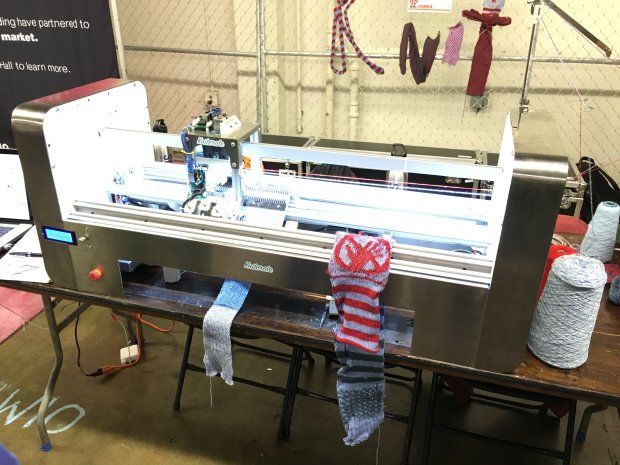
“Textile is an advanced technology,” says Scott Hudson, a researcher at Carnegie Mellon University who has worked with Disney on soft print materials. Calling the textile industry a technology, he was not exaggerating: some experts believe that the loom is an early version of the computer. In the middle of the 18th century, Joseph Marie Jacquard figured out how to save a fabric pattern on a punched card, which made it possible to set the machine to work and automate the process.
3D printing technology is not that polished yet. “You have to find a compromise between stiffness and strength,” says Hudson. 3D printers create an object by layering, and this process is very different from how fibers are turned into fabric.
Rowley took fabric raw materials and created blends that resemble existing fabrics. However, the 3D printer has created something that looks like a "chaotic web". It took a long time before they got a soft, stretchy, foldable and lightweight material that at first glance resembled fabric. But even the final version was not suitable: the material was torn as soon as it was pulled harder.
But even the final version was not suitable: the material was torn as soon as it was pulled harder.
“Fibers that are physically connected, as in the case of 3D printing, remain stationary, while woven fibers move smoothly relative to each other,” Rowley explained. Electroloom shut down last October.
Until the material issue is resolved, the printed garment will look more like a piece of art than a piece of clothing. A year ago, threeASFOUR dresses were featured at the Met Gala-sponsored Costume Institute show. The Manus x Machina show in 2016 also emphasized the role of technology in the fashion world: stars and celebrities dressed in silver at the show, and Zayn Malik appeared in a suit with robot arms.
Oscillation Dress by ThreeASFOUR. Source: Instagram
This year, threeASFOUR has introduced another novelty: a white and blue lattice dress, pictured above, it hugs a mannequin in their studio. The dress consists of 30 pieces, which are first printed and then carefully assembled.